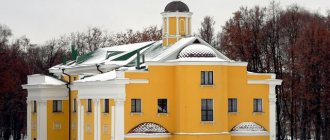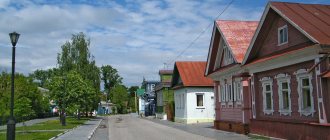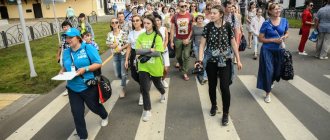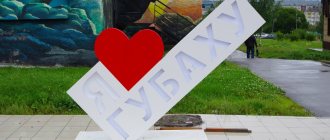Current data
Considering the most important figures associated with the city of Ryazan, it is worth noting the following facts:
- Until 1778, this settlement was called Pereyaslavl-Ryazansky.
- At the beginning of 2021, the number of residents here was 539,290 citizens.
- The city, like the region, is located only 200 km from Moscow and occupies the central part of the East European Plain.
- Includes 40 of the largest and most developed cities in the Russian Federation.
- Today, some areas of industry are intensively developed here.
- It is also a major scientific center.
- In addition, the settlement is a military center.
- The city is located on the high bank of the Oka River.
- In terms of infrastructure, there are 2 airfields, 2 railway stations, and a bus station. The city has 2 ports, which along the river bed have access to the Arctic Ocean and the Atlantic Ocean, as well as to the Caspian coast.
- It is the capital of the Ryazan region.
Every man for himself
In 1236, led by Genghis Khan's grandson Batu Khan, Tatar-Mongol troops conquered Volga Bulgaria. A stream of refugees fell on the border Russian principalities. From their words, it quickly became clear that the campaign to the West planned by the nomads would not be limited to Bulgaria. A mortal threat was approaching Rus'.
Reproduction of the drawing “Batu Khan” on a Chinese vase by an unknown artist. Museum of History and Reconstruction of Moscow. Photo: RIA Novosti
Discussion of possible joint actions between the princes was sluggish. Those whose possessions were located further from the steppes hoped that, as before, the danger would not reach them.
The Ryazan principality could not count on this - the path of the conquerors inevitably had to pass here. Ryazan Prince Yuri Igorevich , preparing to take the blow, still hoped that the squads of other principalities would come to his aid.
Statistics by year
If we look at statistical data on residents in Ryazan by year, here are the numbers provided by Rosstat:
- In 1811, only 7,800 people lived here.
- By 1856 the number had increased to 21,449 people.
- By 1913 it reached 49,100.
- In 1939 there were 95,357 people.
- In the post-war period, the number of townspeople increased to 136,000. This happened by 1956.
- Then gradual but continuous growth continued. And by 1992 the population was 529,000 people.
- But 1993 and 1994 were not the most prosperous years in terms of historical events taking place in the country. Therefore, although slightly, the composition of the townspeople decreased to 526,000.
- By 2000 it amounted to 529,000 people.
- In 2005 it became 515.900.
- In 2010 – 524.927.
- In 2015 – 532.772.
- As of 2021, the number reached 539,789 people.
As can be seen, in the pre-war and post-war periods the population increased quite rapidly. But, after the collapse of the USSR, the number of citizens living here initially fell. But then, from the moment the economic and political situation stabilized, the number began to recover. True, not as intensely as it happened before.
Time for a change
During the period of internecine wars, the ancient Kremlin of Pereyaslavl-Ryazan occupied a small territory in terms of total area. And further along the ancient architectural buildings you can trace the growth of the Kremlin, because there were monasteries along the city’s borders. In the 14th century, the city developed in a southern direction towards the Spassky Monastery. In the 15th century, the Dukhovskoy Monastery was founded, which became the northern protrusion of the Kremlin. Then in different directions - Troitsky, Solotchinsky, etc. The Ryazan Kremlin soon consisted of a chain of fortposts. At that time it was a powerful system of defensive fortifications.
By the 14th century, Pereyaslavl became the largest city in Poochya and the capital of the principality; its heart was a wooden Kremlin with 12 towers, which represented the protection of the grand ducal court located inside and the houses of wealthy citizens.
The construction of the Kremlin with stone buildings began under Prince Fyodor Olegovich. The Assumption Cathedral was one of the first to be built; today, only the apses of the once white stone masonry of the 15th century, cleared for modern spectators, have survived from it.
About the city
If we consider the specifics of the city, here is what data can be presented for Ryazan:
- The area of the settlement is 224,163 sq.m.
- The date of foundation is 1095, and the first mention in 1096.
- Until 1778 it had the name of Pereyaslavl-Ryazan.
- Situated on the high bank of the Ob River. Occupies mainly the right bank.
- Ethnographers and linguists associate the toponym “Ryazan” and “Ryazan” with the old Russian word “cassock,” which translated means “swampy area.” It is also believed that this was the name of an ancient Russian coin and that a variety of apples was named in the same way.
- The settlement is located in the Moscow time zone.
- The climate here is temperate continental, which gives a relatively comfortable level of living here in winter and summer.
- Despite the fact that the real history of the city goes back about 1000 years, in fact, archaeological excavations have confirmed that there were sites of ancient people here, dating back more than 80,000 years.
- Although, other historical sources claim that in fact the city is only 810 years old.
- The body that governs the city is the city council. It adopts laws within the scope of its vision and ensures the functioning of social, budgetary and other organizations.
- There is also a youth parliament here, which puts forward legislative and parliamentary initiatives.
- From the point of view of administrative division, there are the following district entities - Sovetsky, Oktyabrsky, Zheleznodorozhny, Moskovsky.
Coat of arms
The coat of arms of Ryazan is presented in the form of a golden French shield. Crowned with the Monomakh's Cap.
It depicts the prince in a scarlet sleeveless cloak, fastened with a gold clasp on the chest. He is wearing silver pants and a green dress. The hat and boots are also green. In his right hand the prince holds a silver sword, in his left - a scabbard of the same color.
The structure is held on a patterned base by a golden griffin and a silver horse. The artiodactyl is presented with a scarlet tongue, golden mane and tail. The bird is burdened with red lights.
The shield is surrounded by a gold ceremonial chain, which embodies the official badge of the head of the municipality - the city of Ryazan. The motto is inscribed in black letters on a precious metal colored ribbon. It reads: “A glorious history – a worthy future.”
The artistic composition was adopted by decision of the Ryazan City Council dated May 17, 2001 No. 183 (as amended on June 26, 2008). Included in the State Heraldic Register of the Russian Federation under No. 172.
National composition
According to the latest data from Rosstat, this is the population, in terms of ethnicity, that predominates in Ryazan, taking into account the latest census and available data for 2021:
- Russians are the overwhelming majority here, almost 96%.
- Ukrainians are no more than 0.8%.
- Belarusians and Azerbaijanis – 0.3% each.
- Armenians 0.5%.
- Tatars and Mordovians – 0.2% each.
- Other nationalities – in the total population no more than 1.9%.
Thus, it can be unequivocally stated that Russians predominate here.
Victory Square, Ryazan
Secondly, we will look at Victory Square in Ryazan. Here is a monument in honor of the victory over Nazi Germany in the war and the Eternal Flame, which is also a place near which meetings are often scheduled. About a year ago, the lighting here was updated, and now the monument looks truly majestic at night.
Concerts are often held on Victory Square for residents of Ryazan, usually on holidays, for example, on city day or New Year. Parades on May 1 and 9 also start here, the final destination being Lenin Square.
There are many remarkable things on Victory Square in Ryazan. Here is the Victoria Plaza trading house, which houses many good shops and several fast foods, including the first McDonald's in Ryazan and a Subway restaurant.
Also, a couple of minutes walk from Victory Square is the most popular winter skating rink in Ryazan - Lokomotiv. It is located right behind the Deep club, popular among Ryazan youth, next to a mini amusement park.
Gender and age
From a sociological point of view, not only the size and national composition of the population is important, but also the following parameters:
- How many residents in the city are of working age?
- How the general population is distributed by gender.
Here is what Rosstat data is available on these characteristics for 2021:
- In total, 539,789 people lived in the settlement during this calendar period.
- Men – 242,345.
- Women – 297,444.
- Children from 0 to 4 of both sexes 29,196.
- From 5 to 9 years – 28.646.
- From 10 to 14 – 23.690.
- From 15 to 19 – 25.165.
- From 20 to 29 – 70.525.
- From 30 to 34 – 49.698.
- From 35 to 39 – 43.630.
- From 40 to 59 – 111.472.
- From 60 and above – 125.549.
Thus:
- The younger working age female population in the city is 41,666.
- Younger than able-bodied male – term 44.359.
- Able-bodied female – 149,822.
- Able-bodied males – 156,346.
- Women older than working age – 105,956.
- A man older than working age – 41,640.
The largest cities in the Ryazan region by population
There are only 12 cities in the Ryazan region. There are no millionaires among them, and the capital of the region, Ryazan, boasts only 538,962 residents. Next in the ranking of the largest settlements in the region is the small town of Kasimov, where 17 times fewer people live: 30,696. In another 7 cities, the number of inhabitants ranges from 10,340 to 26,329, and in the smallest, Spassk-Ryazansky, which closes the ranking, only 6,555 live. Because of this imbalance, the region risks becoming monocentric, since almost half of the population lives in the capital, which is why the remaining settlements practically do not develop.
There are also 21 urban-type settlements. Interestingly, three of them have more inhabitants than cities. These include:
- Shilovo - 14,531;
- Lesnoy - 7,687;
- Tuma - 5,899.
List of the most populous cities in the Ryazan region:
- Ryazan - 538 962.
- Kasimov - 30,696.
- Skopin - 26,329.
- Sasovo - 25,747.
- Ryazhsk - 21,623.
- Rybnoye - 19,265.
- Novomichurinsk - 16,852.
- Korablino - 11,272.
- Mikhailov - 10,340.
- Spassk-Ryazansky - 6,555.
Migration
As for the migration situation, today it looks like this:
- In 2021, the total population in the region, and not just in the city, increased by 905 people. These figures relate exclusively to external migration, that is, when people come from other countries or leave for other states.
- As for intra-Russian movement, over the same calendar period, 15,481 people arrived in the region, and 16,733 left.
- Thus, we can conclude that the region is losing its citizens due to the fact that they are looking for more promising places to live. In addition, the closest accessibility in terms of distance is Moscow and the Moscow region. And the prospects here for the country’s citizens are higher, which most likely causes internal migration outflow within the state.
Skopin - the city is developing towards tourism
The third place in the ranking is occupied by Skopin, where there are 4,000 fewer residents than in Kasimov. This is a small provincial town with a density of only 852.07, so the problems of megacities or even large regional centers are unusual for it. It has the status of a city of regional significance, to which 5 other settlements are subordinate, but the buildings here are predominantly low-rise or private.
There are two large enterprises here that shape the city’s economy and provide the local population with jobs: the Mining Equipment Plant and the Automotive Aggregate Plant, the largest manufacturer of automotive components in Russia. It existed for a long time, causing irreparable harm to the ecology of the region. During its existence, about 1.5 tons of waste were buried in burial grounds near Skopin, which contained approximately 200 billion doses of toxic arsenic, lethal to any person. The settlement is an important transport hub: the Caspian highway and railway lines of federal significance serve strong passenger and cargo flows. Skopin is also known as the center of Russian pottery, which attracts tourists from all over the country. Thanks to the development of tourism infrastructure, since 2021 there has been an increase in the number of city guests who want to get acquainted with its historical past and folk crafts.
Forecast
Despite the fact that the growth in this locality is quite slow, its prospects still exist. They are due to the fact that the infrastructure here is quite well developed and there are certain industries. But the low level of salaries observed today does not provide broad prospects for citizens.
Without government intervention and the introduction of social programs to support different segments of the population, development will proceed too slowly. Thus, key opportunities will be missed and the region may become depressed. Therefore, we should expect innovations from the government and local governments, which can also increase the attractiveness of the region.
Climate and ecology
The location of the city in the center of the mainland creates conditions for a temperate continental climate. This means that the city has warm summers and not very harsh winters. The temperature difference between summer and winter reaches 30 degrees. The population of the city (Ryazan has many residents) has adapted well to such changes. The seasons in the region coincide almost exactly with the calendar seasons. Summer begins at the very end of May and ends at the beginning of September. The average temperature in summer is +18 degrees, but the air during the day can warm up to 25 degrees. Average annual temperatures remain around plus 8-9 degrees. Winter begins at the end of November and ends at the end of March. On average in January the thermometer shows about minus 9 degrees.
The region receives quite a lot of precipitation (540 mm), the rainiest months are July and August, and the most snowfall occurs in January-February. Snow cover sets in in the city at the end of November. The sun shines in Ryazan for about 1900 hours a year.
Ecology in the city is a rather acute problem. Industrial enterprises, especially the chemical industry, pollute the air and water of Oka. The abundance of transport also contributes. Therefore, in some areas, such as Khimvolokno, Southern industrial center, large amounts of harmful substances are found in the air. Therefore, the population of Ryazan prefers to live closer to forested areas, for example, in the Meshchersky forests area in the north of the city.
Demographics
Every year, 5 thousand more people die in the city than are born. Migrants provide positive dynamics in overall indicators. It is thanks to them that the population is growing. Ryazan is located in such proximity to the capital region that allows people to commute to work. Therefore, new residents constantly come to the city. The mortality rate and life expectancy here do not differ in general from the national indicators. And like many cities in the country, Ryazan is gradually “aging”; the number of elderly people is increasing.
Economy and infrastructure
Like many cities in Russia, the population of Ryazan is experiencing economic difficulties. However, the city has a stable economy thanks to the work of mechanical engineering, oil refining, and food industry enterprises. Several scientific and educational centers make a great contribution to the economy, which have a positive effect on the rejuvenation of the city’s population. Tourism and service sectors are actively developing in Ryazan. The main difficulties in the city are related to the condition of roads, obsolescence of utility networks, and insufficient new housing.
Employment
The total population of (Ryazan) is highly dependent on migrants, for whom this place is a convenient transit point from Central Asia to the capital regions. The city's good supply of its own industrial and manufacturing enterprises and proximity to the Moscow region make it possible to keep unemployment here at a low level, on average 3.5%. The population of Ryazan demonstrates the so-called pendulum migration. Many residents work in the capital region, but still live here.
Administrative division
Officially, the population of Ryazan in 2014 lived in four urban districts: Moscow, Zheleznodorozhny, Sovetsky and Oktyabrsky. But in the minds of Ryazan residents themselves, the city is divided into a much larger number of districts. Thus, in the west of the city there are such parts as Diaghilevo and the military town, the settlements of Moskovskoye, Mervino, Kanishchevo. The Sovetsky district is located in the central part of the city, and residents call it that way - the center. In the south are Gorroshcha, the villages of Yuzhny and Dashki. In the west there is the village of Stroitel, this is the most unfavorable place to live in Ryazan.










